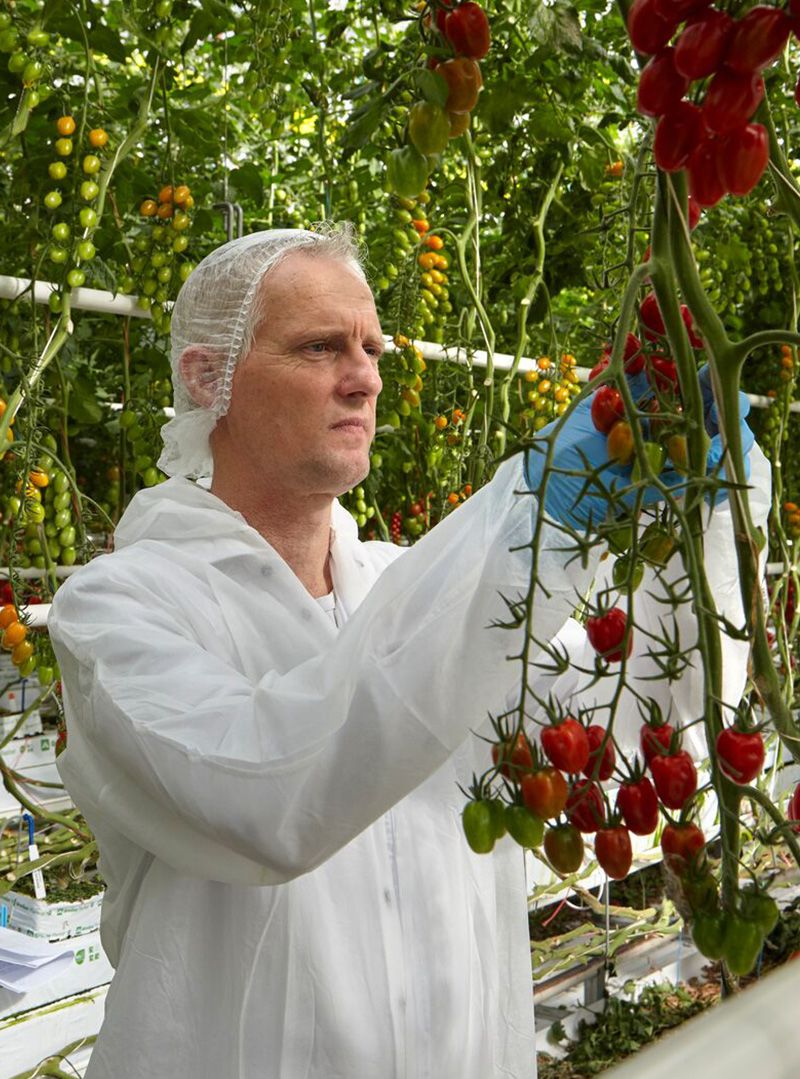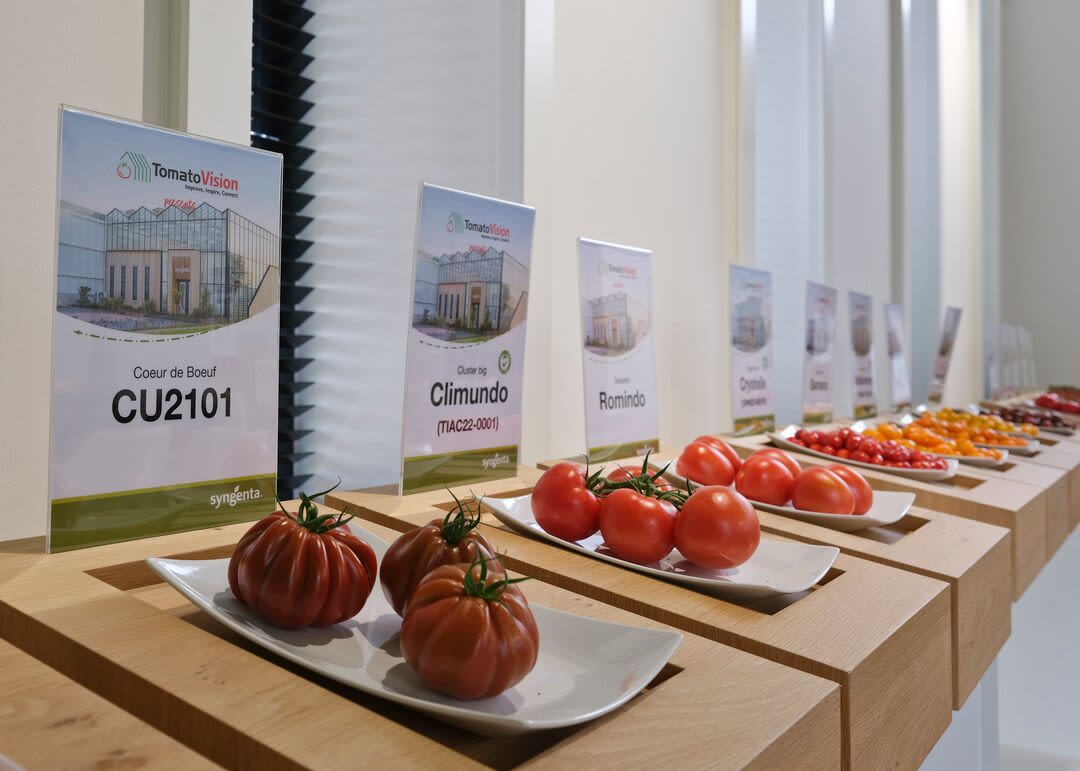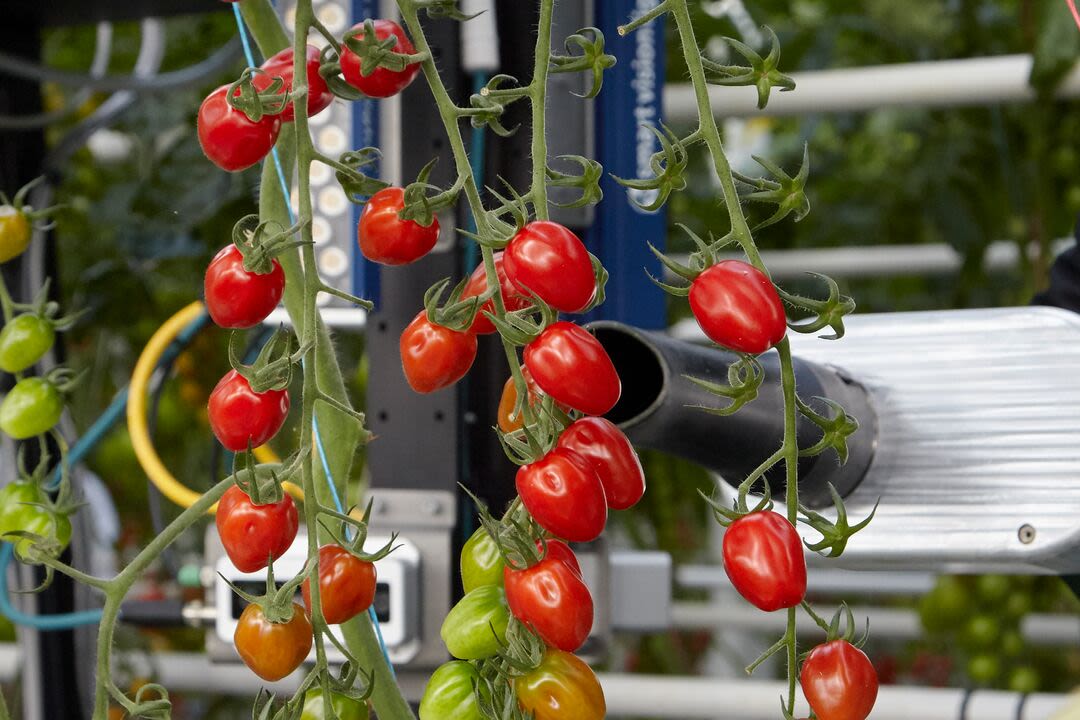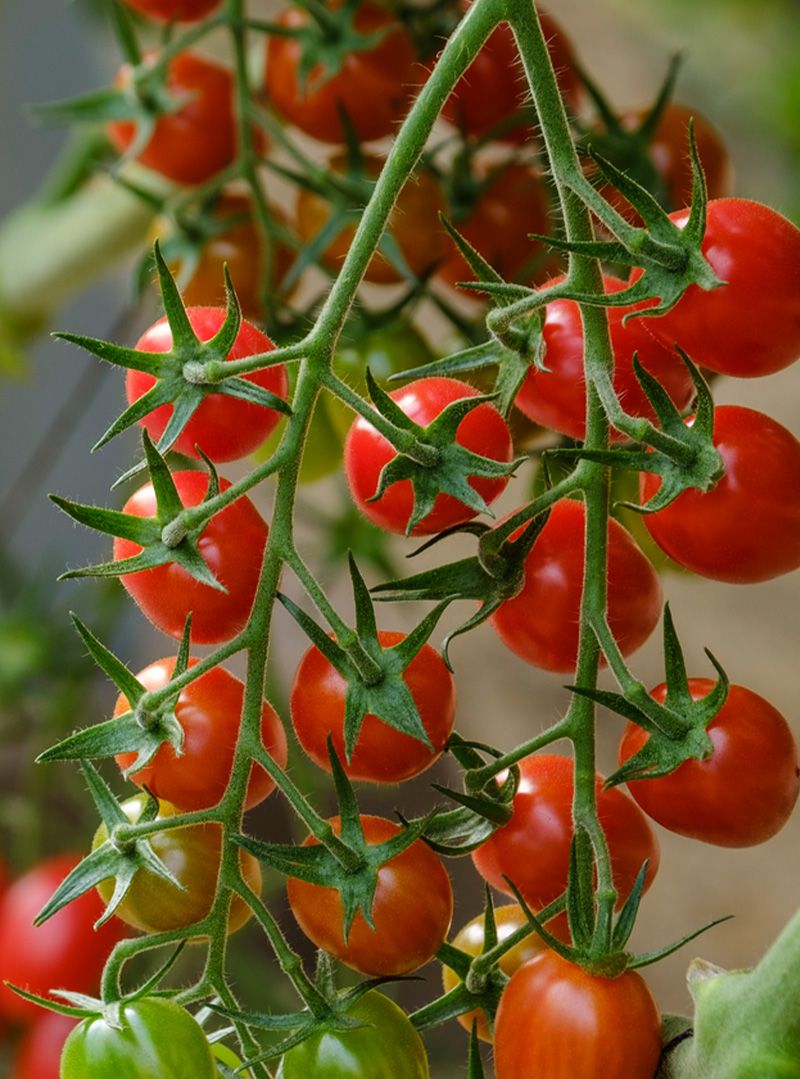TomatoVision
Using AI to breed tomorrow's tomatoes
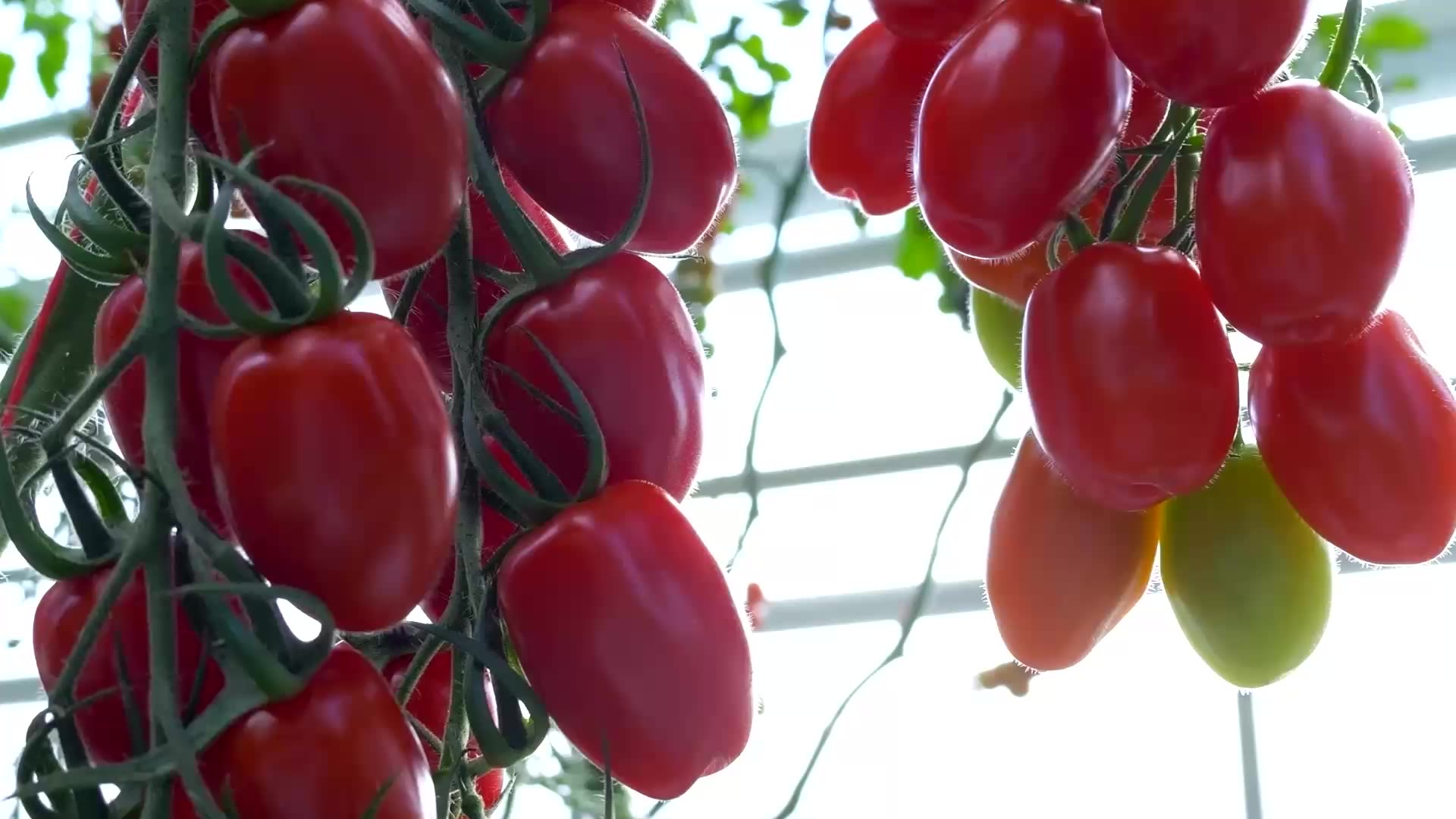
It’s not every day you eat a tomato harvested by a robot. But at a high-tech greenhouse in the Netherlands, it’s possible.
Welcome to TomatoVision, where scientists are using cutting-edge research, development technologies and artificial intelligence (AI) to collect millions of data points to identify the most promising new tomato varieties, including those that work seamlessly with machine harvesters. While this may sound like science fiction, at the advanced research and testing facility in Maasland, it’s reality.
“Above all, it’s a research and development location,” says Arthur van Marrewijk, Active Greenhouse Technical Manager at Syngenta. “Around 90 percent of what’s happening here is related to generating information to make better informed, data-driven decisions on tomato varieties.”
In the state-of-the-art facility, known as an active greenhouse because it uses equipment to control its internal environment, traditional breeding expertise is combined with AI, using advanced analytics to collect precise climate, yield, and crop performance data. From concept varieties to taste testing, breeders spend years working on tomorrow’s best tomatoes, and robotics trials have become part of the process.
Arthur van Marrewijk, Active Greenhouse Technical Manager at Syngenta.
Arthur van Marrewijk, Active Greenhouse Technical Manager at Syngenta.
Future-ready tomatoes
Hundreds of new tomato varieties are tested annually at the 14,000 m² greenhouse designed to mimic real-world conditions – that size is the equivalent of approximately 52 average family homes with gardens.
Features include lit and unlit cultivation, with complete climate control for testing and selection. There’s also a demonstration kitchen and reception area to host visitors from around the world, including large multi-national produce companies and the largest vegetable distributors globally.
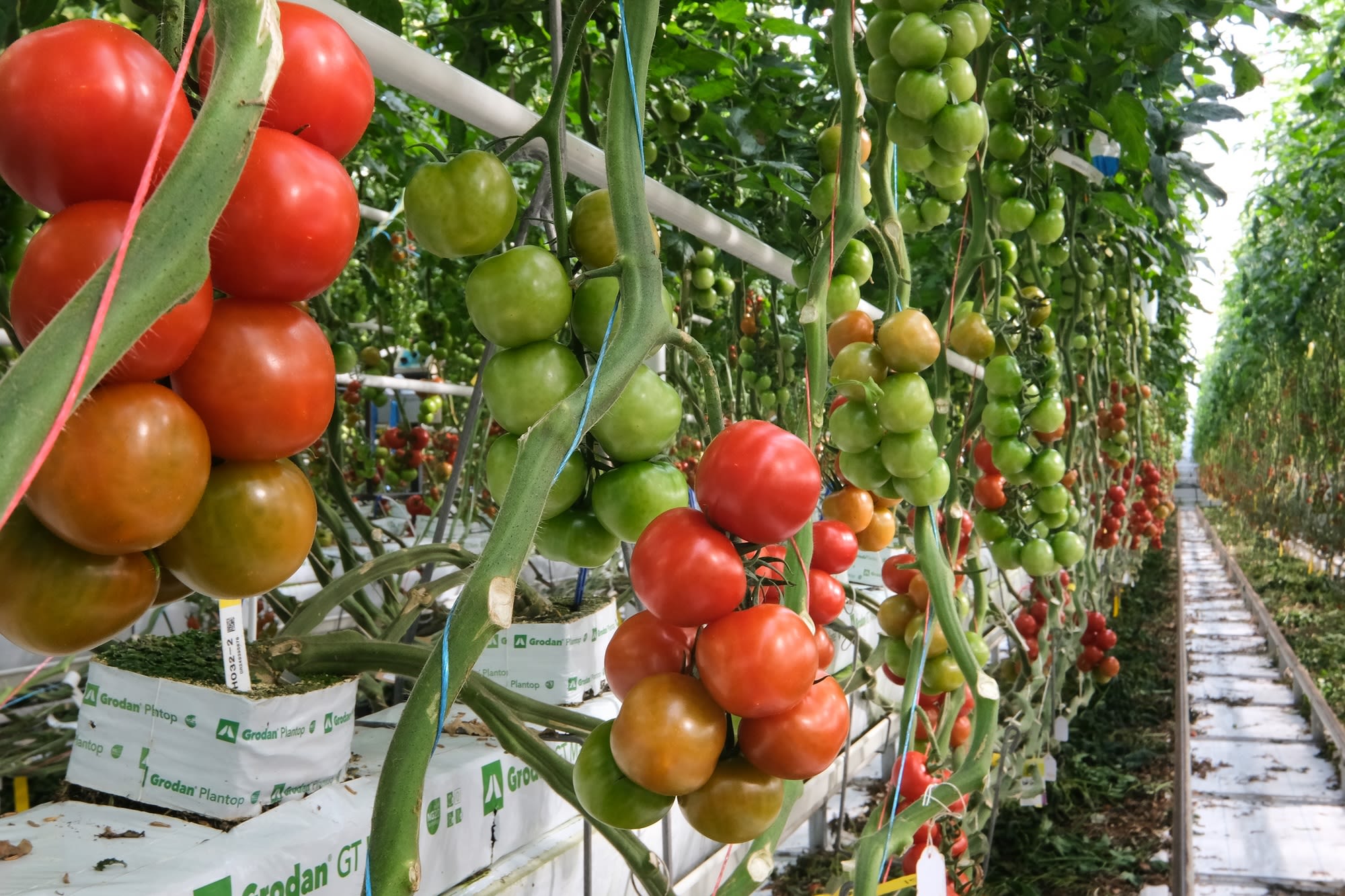
Today’s technology and tomorrow’s tomatoes
With only a fraction of the hundreds of varieties eventually being sold commercially (between 1 and 3 percent of the tomatoes trialed at TomatoVision make it to market), the focus is on bringing forward the most impactful solutions.
“This is the place where we see our hybrids [carefully controlled cross-pollination of two different varieties] for the first time in the right conditions,” says Haoyang Duo, Senior Breeder at TomatoVision. “We use an extensive set of molecular markers to maximize breeding efficiency. This enables us to bring the most desirable traits together into each new hybrid as quickly as possible.
Only a fraction of the hundreds of varieties of tomatoes tested annually end up being sold commercially.
Only a fraction of the hundreds of varieties of tomatoes tested annually end up being sold commercially.
“There is what we call a product profile which includes a lot of criteria like taste, fruit quality, shelf-life, production and more. Basically, I have to combine all of these traits into one hybrid which then can be sold to the market. The key is to stay focused.”
In this research stage of development, robotics are included so that plant structures can be identified that work best with machine harvesting.
For example, tomatoes are mostly clustered throughout the plant, sometimes making it difficult for a robotic harvester to do its job effectively. The work currently taking place at TomatoVision allows breeders to identify varieties that will, at some stage, be suitable for growers who want to move to robotization.
Thanks to the machine learning in the active greenhouse, the robot ‘learns’ as time goes on. This is a continuous AI learning process for the robot, and it will keep improving and progressing at TomatoVision.
At TomatoVision, robotics are included so that plant structures can be identified that work best with machine harvesting.
At TomatoVision, robotics are included so that plant structures can be identified that work best with machine harvesting.
Duo says: “One of the reasons we have the robot here is to see how our varieties adapt to this way of working. Through this joint effort, we can optimize the performance of our products and help growers to solve challenges like labor shortages.”
She continues: “We can adjust a lot of different parameters for the best harvesting performance. The robot can be adapted to different varieties for the best results…We want to identify varieties that can be harvested by the robot easily.”
But it’s not all robots and data. Buzzing around the rows of tomatoes are bees, doing what bees do best: pollinating. Although the paucity of pollen on tomato flowers means that their diet is supplemented by sugar water. And the bees are not alone. Beneficial insects with an appetite for tomato pests are also flying around the greenhouse.
Accelerating innovation
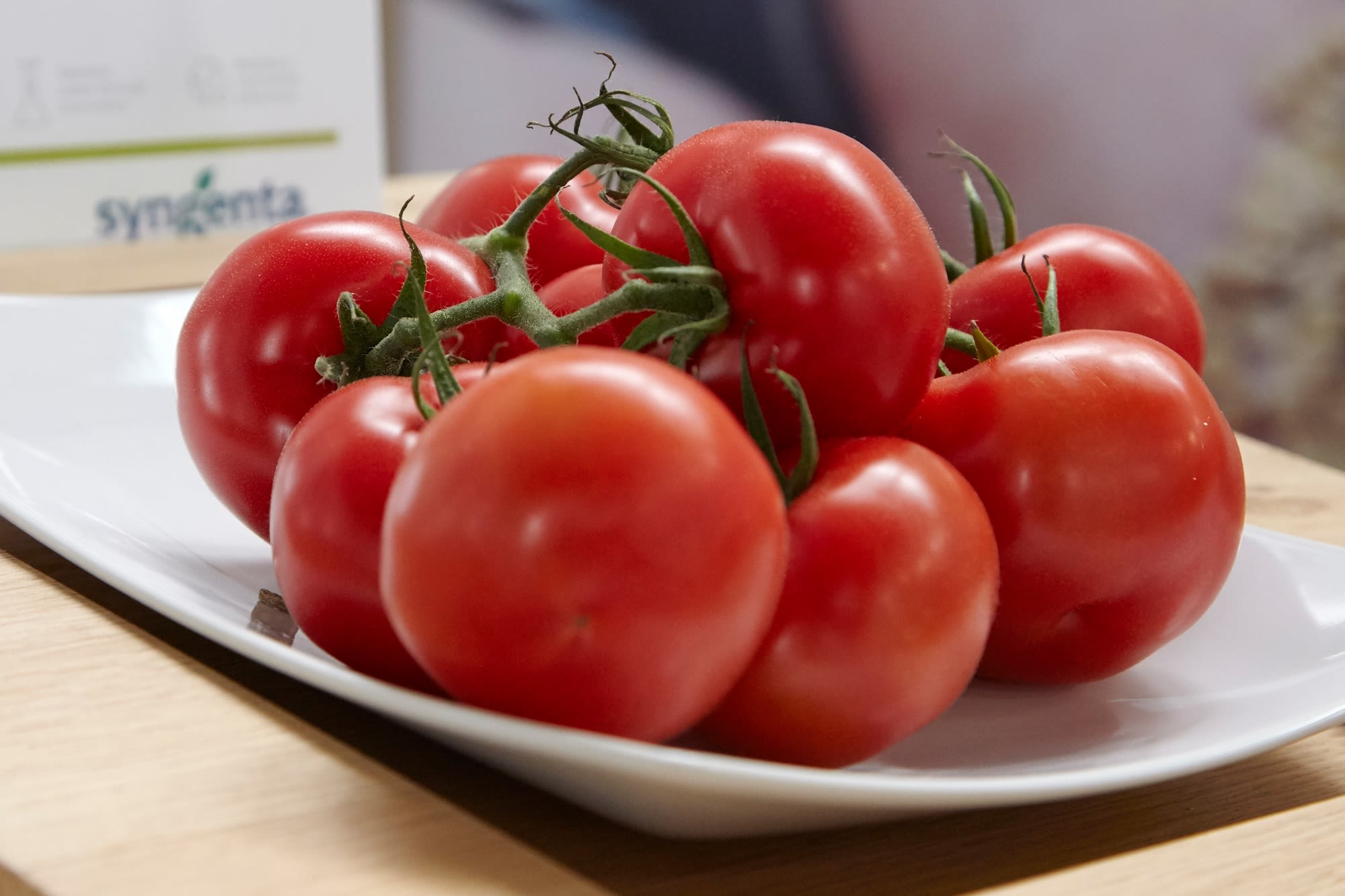
Syngenta is continuously working on new varieties containing multiple sources of resistance to ToBRFV, such as this cherry tomato TIPM22-6002R.
Syngenta is continuously working on new varieties containing multiple sources of resistance to ToBRFV, such as this cherry tomato TIPM22-6002R.
Meanwhile, employees and visitors to TomatoVision adhere to strict phytosanitary protocols, which are essential to protect cultivation and research in the greenhouse spaces. This is especially important in light of the devastating tomato brown rugose fruit virus (ToBRFV), which can cause crop losses of up to 70 percent, spread rapidly, and damage fruit quality.
Thanks to the Syngenta R&D vegetable team, Syngenta launched Lansor with intermediate resistance, one of the world’s first tomato varieties with intermediate resistance to ToBRFV, in 2021, following five years of intensive work. Many other varieties with intermediate resistance followed, including Syngenta’s ToBRFV-resistant baby plum tomatoes, a blend of traditional breeding and data-driven insights. Syngenta is continuously working on developing new varieties containing multiple sources of resistance to ToBRFV.
The pioneering work at TomatoVision means that faster crop advancements, more disease-resistant fruit, reduced food waste, and happy growers and consumers are all within reach.


